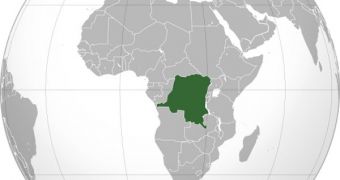Scientists announce the possible discovery of a new gigantic impact crater in the central parts of Africa, more precisely in DR Congo. The massive deforestation currently taking place in this country is uncovering what looks like a massive ring in the ground, researchers report. Thus far, observing the feature from satellite has been impossible due to the massive amount of trees that was covering the area. But now geologists and planetary scientists have begun taking a massive interest in determining what caused the hole in the Earth, the BBC News informs.
Some say that the new crater, which measures between 36 and 46 kilometers in diameter, may be one of the largest such features discovered in the past ten years or so. Italian researchers who have had a chance to look at the feature proposed a number of causes for its creation, but eventually they themselves came to the conclusions that nothing but a space impactor – most likely an asteroid or a comet – could have formed this hole. They recently presented their findings at the latest annual Lunar and Planetary Science Conference, held in Houston, Texas.
With the forest cover gone at the location, satellite images can easily pick the feature up. Online datasets from the Earth Impact Database show that there are an estimated 25 craters on our planet that are larger in size than the one recently discovered in DR Congo. As the past decade slowly passed, progressing deforestation began revealing the first trace signs of the crater. Eventually, the damage to the forests above was sufficiently large to allow for satellite-based instruments to analyze it. The contours of the Unia River apparently outline the ground feature, flowing right around its circular shape.
The Wembo-Nyama crater appears to be irregular in shape, and has a height of about 550 meters. While this may seem a bit counter-intuitive at first, experts say that space impacts tend to elevate the more dense rocks at the site where they slam into the ground. Over millions of years, geological processes erode the less-dense rocks around, eventually producing a dome-like feature, which many people do not associate with craters. According to the Italian team that presented the findings, it could be that the structure was produced by a 2-kilometer-wide space rock slamming into our planet's crust.

 14 DAY TRIAL //
14 DAY TRIAL //